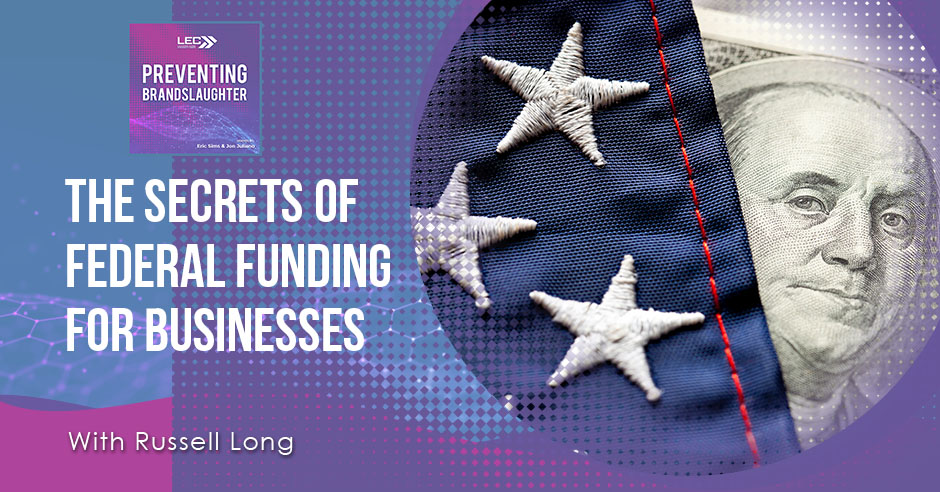
There are many programs from the government that target small businesses and tech startups. However, not many pursue them due to the often convoluted and confusing processes. Bridging this gap is Russell Long. He is the founder of Long Capture, a company that assists companies and startups in making the transition to pursue federal funding by leveraging opportunities provided by the Department of Defense (DoD). Russ joins us in this episode to reveal the secrets of entering the DoD market with federal funding, helping businesses diversify their revenue streams. He highlights the complexities of government contracting and offers solutions to address the challenges and barriers within the process—from unnecessary certifications to biased requests for proposals. Plus, find out why Long Capture advocates for a more free-market approach and how they help businesses navigate the system. Don’t miss out on this growth path. Tune in to learn more about leveraging funding opportunities and contracts offered by the DoD.
—
Watch the episode here
Listen to the podcast here
The Secrets Of Federal Funding For Businesses With Russell Long
We’ve got another special guest. We’ve got Russell Long or Russ Long with Long Capture. We appreciate having you on the show. It’s great to have you.
Thank you so much for having me. I’m excited.
We’ve been looking forward to it quite a bit. We always start things off outside of recapping what the show’s all about, which is preventing brandslaughter. It’s a pretty big umbrella when you think about what we’re talking about because most people think of marketing when they think of branding because it’s what you say about yourself.
What John and I have a passion to dig into is finding out about the things that different businesses, entities, companies, and industries do. They’re well intended at times, but sometimes those things end up backfiring in your face due to maybe it’s ignorance, lack of experience, or arrogance. It’s a combination of those things. It damages a brand. We’re trying to prevent that brandslaughter from happening by putting messages out there about different industries, businesses, and cultures that can allow our readers to learn and grow. As we kick things off, first, tell us a little bit about you. Where are you from, what are you about, and what’s your background a little bit?
I’m originally from Tulsa, Oklahoma. I’m an Okie. I came out to Colorado Springs to attend the Air Force Academy. I loved the mountains. After I graduated, I was in the Air Force. I’ve been on active duty for a couple of years. I was a contracting officer. A lot of the acquisitions and the purchases and things like that, everything from janitorial services buying refrigerators and TVs, to fortunately, in the end, I got to buy launch vehicles to help put satellites in space.
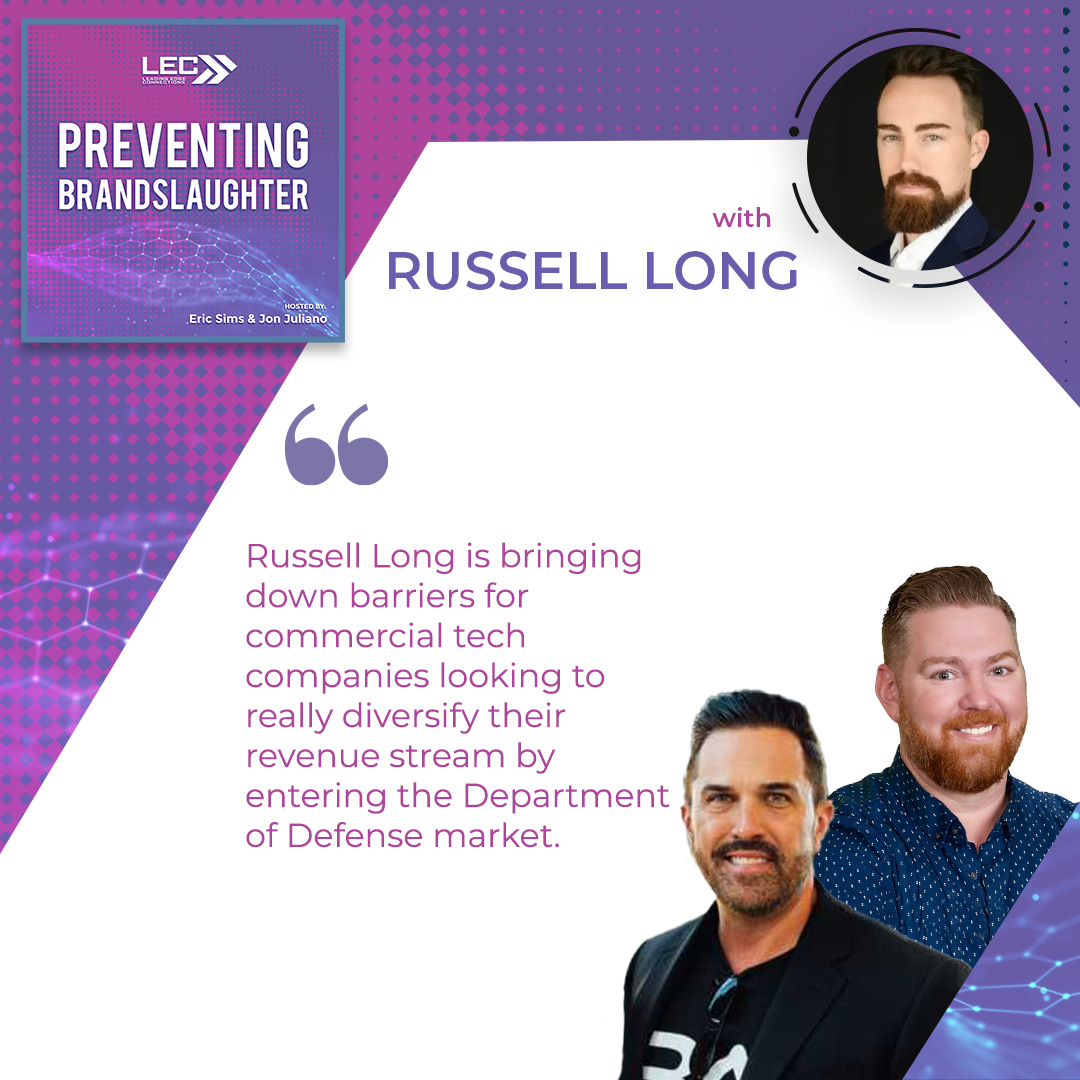
That was a little bit more sexy to write home about than arguing over who was stealing toilet paper out of the janitor’s closet. I took that experience in the Air Force and saw the world. I went to Kansas and New Mexico. That was exciting of all the places in the world. I love Colorado. We moved back here many years as I started Long Capture.
What part of Colorado are you in?
I’m in Colorado Springs.
Give us a little bit of info and chat with us a little bit about what Long Capture does and why you started it.
The Federal government focuses on sending a lot of money to small businesses. There are things called Set Aside. There are a lot of programs targeting small businesses and tech start-ups. It’s very convoluted and confusing to work with the government frustrating. I knew there was something there. Almost all of the work that I did when I was in contracting when I was on active duty was working with small businesses.
I’d see them get in trouble in all kinds of different ways. I couldn’t figure out how to invoice. I didn’t understand the contract terms and how to be competitive when you were submitting a proposal. I didn’t understand the lowest price, technically acceptable, and all these silly things that the government does. I knew there was a gap there to be filled. I didn’t have it figured out when I started Long Capture, but what’s developed is we saw a lot of big innovation pushes, starting with the Air Force and moving to other branches as well.
At the time, it didn’t feel great. It took a while to get traction, but there’s this whole big movement. The door got kicked open for cool tech start-ups and cool technology companies that have been commercially focused to start having a great front door and on-ramp to working with the Department Of Defense. That’s where we got a lot of our traction.
These days, our focus is on working with these commercial tech companies that got great traction, maybe solid revenues or a couple of rounds of investment on the private side. They’ve got a good thing going and they’re looking to diversify their revenue stream and bring their technology into the Department Of Defense.
The funny example I always like to give is almost every Air Force base has a golf course. We got to maintain the golf course and scheduling. They have gyms for working out and cafeterias for feeding the airmen. They are many different use cases that most companies don’t think about. The broad range of technologies and companies that can work with the DOD is quite a lot.
That’s one of the first things I was wondering when I was reading up on it. I was like, “Is the scope broad or is this tied down to the only military type of technology that would be used in the making of tanks or airplanes?
No. We are fairly technology agnostic as long as we think there’s a good fit and some scale there like technology wearables. All the different soldiers and airmen have to take fitness tests and meet certain standards. Having fitness programs, even diet dietary programs, get people back on track if they’re about to get kicked out for not meeting the fitness standards. There are all kinds of different use cases like scheduling apps.
We’ve worked with drone companies that are out doing surveys for construction teams, construction sites, or perimeter security. We got use cases for that within the Department of Defense. It’s artificial intelligence, machine learning, a lot of different software and apps, machine vision, launch vehicles to put satellites in space, the satellites and sensors themselves, and a solar-like broad range of technologies. Very few are tied directly to a weapon system. Certainly, there are some.
Jon, do you have some questions about that?
First, I want to say thank you for your service. I appreciate what you are doing for the country. Knowing that you’re helping, and that was one of my questions was, does the technology have to tie into any military component? You’ve already answered that one. The second question is there a minimum standard that a company has to possess before you’re able to help them? I’m assuming they file their article and incorporate it. They have to show some runway to qualify for a DOD contract. Is that right?
There are many different entry points there. There are dozens, not hundreds, of ways to approach government. We have focused on a couple of specific programs. When I work with a tech company, I like to see a little bit more mature technology. That can be typically indicated by a solid amount of revenue, $5 million or $10 million plus, or they’ve gone through series A, even B, or C.
I’ll step back for a second. One of the biggest lessons I learned over the years, working with all kinds of different stages of companies. I’m biased. We work with certain programs, but I like to see companies that have that solid foundation commercially because then they can spend the time, resources, and manpower and know that it can be a little bit of a longer sales cycle, but the upside is huge.
If you can stick with it for 9 to 12 months to get that initial revenue and a lot of times we’re faster than that, but it might be $75,000 or maybe $1 million, but they can stick with it long term, like the 3 to 5 years, that’s where you can see that like $20 million, $50 million, $100 million, or even more looking at annual, pulling down a $1 billion contract here and there these days.
It would be good for the individuals who are reading who have started a tech company or are at a certain milestone who would be the ideal individual for you to communicate with.
For me, a little bit more mature, but there are a lot of pathways and very early-stage research and development programs like the National Science Foundation and the National Institute of Health. Not a lot of places where we play what’s called the STTR Program, Small Business Technology Transfer. There are a lot of places for companies that are in the earlier stage. The funding cycles tend to be a little bit slower than what you see in venture capital, but it’s non-dilutive. It depends on how you want to build your company, but there can be some other good routes.
It’s possibly more advantageous for a company of anybody entering the technology space to work with you and the Department of Defense as opposed to taking that traditional venture route that has been glorified for the past years.
We’re trying to take something that’s they’ve figured out a lot of the different go-to-market fit and these different aspects of the tech. We’re going to try and turn up the notch. We’re going to try and accelerate, “Here’s a new revenue stream. Here’s a new customer.” With it being more mature, there’s a lot of different government silly and has like these different buckets of funding and they can’t cross. We can pursue multiple different funding buckets, essentially. It opens the aperture of what we can get after.
In my experience in this industry alone, working with government entities is like learning a whole new language. There are different contracting and different points of contact, and an individual with one title in the public sector or private sector is not the same in the government field. It’s like learning a whole new language and you’re forced to learn by a fire hose.
Is that where you guys step in? I know there’s a lot you do, but my assumption would be this. Let’s assume someone has great software or technology. It’s proven out. They’re doing a good job. They’ve been selling it commercially. Jon and I see this a lot in the contact center business because we’re in outsourcing.
Our business touches a lot of industries and everybody’s language and the way they like to lay things out when they’re doing contracting is very different. If you’re talking about the automotive industry versus a software company versus a medical client. The language and what they require are totally different. It can be confusing and often even kill deals because people may not be, communicating adequately.
I remember back in my early days of being a recruiter. When I would recruit people coming out of the military, and I’d look at their resume, they would have all the stuff on there that says, “Here’s the stuff I did.” I’ll be like, “I don’t know what any of that is.” When you translate it into corporate language, it would be X, Y, and Z, and it makes total sense. I’m assuming when you go to contract, there is a lot of that that takes place.
That’s typically where we have to start. The beginning of the pipeline or the sales funnel is we try and do a lot of content, blogs, master classes, webinars, and things like that to help answer a lot of these questions and talk through a lot of these different programs. In my sales conversations, a lot of it is putting this in plain English, “What do these different phases mean? What do these different rounds mean? What do these different contract types mean for us?” We try and put that in real language, like, “How does that translate to ARR on the software industry side? Is that based on options? What is that?” We spent a lot of time there.
You mentioned something earlier I thought was interesting because it reminded me of a mistake Jon and I made very early on. You mentioned getting into a situation where maybe the timeline is longer and it’s going to be a long investment to get you there. We got involved with some political programs early on, and we took a huge bath one year because it was a mess. It was something new to us and for us, we barely made it through that.
I’m sure you’ve seen or helped prevent some of that. To me, that’s a huge area of brandslaughter that people don’t think of is like, “I’m going after this good thing. We’ve gotten in this process. High five,” and then next thing I know, either I’ve bid it wrong, it’s not priced out where I can make any money, or the process has taken longer. Now I’m out of money before I can even go. There are all these different scenarios. Can you share a little bit about what you’ve seen there and on the good, bad, and ugly?
That has changed my philosophy about who we target, try to talk to and bring in. The companies that I would’ve worked with many years ago, I’ll say, “I don’t think it’s right yet.” Some of the main programs that we target for this on-ramp to working with the Department of Defense when it first came out was lightning speed. We went through some of the early rounds from never thinking about the DOD or haven’t talked to government customers yet in January. By June, we had a $2 million contract. We’d been through phase one, picked that up, and bounced some customers.
Within a six-month period, we’re at $2 million. This is fantastic. There’s a lot of traction to run with. That program has been all over the place as it grew up and matured. We’d have rounds later where they’d come in and maybe pick up a phase one, which is $50,000 to $75,000 in this world right away, which was cool. It was within three months. We’d wait 14 months for phase 2, which was the $1 million to $2 million mark I’m talking about. We went from like 6 months to $2 million to 14 months to $1 million to $1.5 million. That’s where it’s been all over the place.
These days, it’s a little bit more mature and in a steady state. We have a better idea of some of those timelines. Still, the other biggest lesson learned is a lot of companies think they want to do Federal or DOD. You get 2 or 3 into it and they pull the plug on it. It’s like we’ve wasted a ton of time and resources and burned a lot of relationships because we talked to this company. We are the cool tech, and then they totally do 180 and block away from it. There are a lot of lessons learned there. That’s influenced how we’re operating.
A lot of companies think they want to do federal or think they want to do DoD. You get two or three months into it and they pull the plug. Share on XDo you mean the technology company walks away?
Maybe they’re a little bit earlier stage or maybe they didn’t understand how long the sales cycle would last. I’ll take some ownership of communication on our part, especially when we came off of these crazy lightning-fast rounds to these stretch-out delays, plus throwing COVID that made a bunch of things complicated. We stretched out award timelines. It went from like, “This lightning speed is not going to be the standard.” That’s where there was some disconnect.
That’s a solid example of brandslaughter.
If you are on the Air Force side, it’s like, “What are you doing?”
I’m sure it inhibits the ability of that company to ever entertain the option of getting another DOD contractor or even talking to somebody on that side.
We’re fortunate that we’ve got a lot of venture capital and commercial industry still, but they’ve strained it and turned a lot of people away by whiplash from these programs. I do think in 2022, it’s gotten to more of a steady state where we can at least align expectations going in.
It prohibits the growth that inhibits. On top of that, can you talk about brandslaughter? You don’t have to name names if you can’t, but give us some examples of some of the companies you’ve worked with and maybe some of the most egregious forms of brandslaughter that you’ve experienced.
I’ll start with tech start-ups as my clients and then the GovCon or Government Contracting industry. On the tech start-up side, this goes beyond. It isn’t limited to just government and government contracts. Where I see start-ups fail or where I can, at this point, predict failure if they don’t change it is when they try and be everything to everyone.
They’ve got, let’s say, certain software that can solve a bunch of different problems or like a low-code platform or they’re doing software development that could be anything to anyone. If you’re everything to everyone, you’re nothing to no one. Getting them to focus in on like, “What is your secret sauce? What is your specific use case and then competitive advantage or differentiator?”
The way we approach government, we want to hone in on specific problem sets and present, “We think you have this problem, and here’s the solution to that problem.” If we aren’t able to get that level of detail, we can’t ever hook them without a problem. The problem is the hook. That’s where I see it. I’m talking about a five-person company. I’ve seen companies with tens of millions of dollars in venture capital investment. It’s like, “What do you guys do?” It’s like, “A little bit of everything.” It’s like, “What do you do?” It’s been hard.
“Who’s your target audience?” We have done a decent amount of work in the software industry and tech industry because it’s hot. Part of our business is servicing. The service part of the business is technology and sales. One of the unique things that Leading Edge Connections does is that we have a sales development where tech companies can come in and, if they are early cycle, builds out their sales team with us versus having to wait or hire or do all that. The challenge that we’ve seen is the same thing. We learned this the hard way as we brought on this client. We’d ask them all the right questions.
We thought they’d hire us and get ready to go. We’d be like, “We’re starting the sales process targeting this audience.” It’s like a brick wall. You learn like, “How many did you sell?” “We’ve sold a few of these things to my uncle, my brother, and a couple of cousins,” then you’re like, “You got a great idea and a great product,” but you don’t know who your target audience is. You haven’t tested that out yet. You haven’t confirmed all these things.
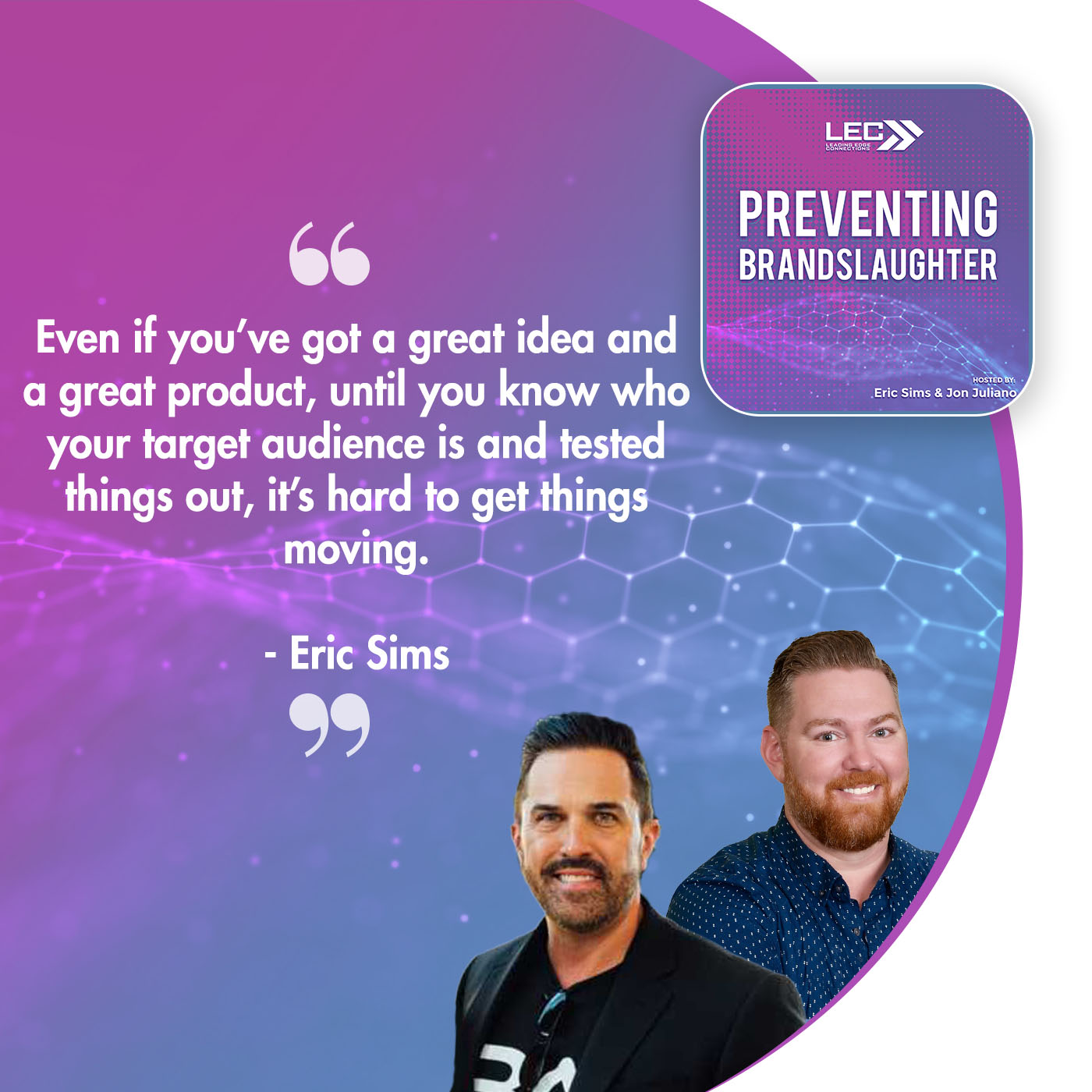
To your point, that lengthens out that first piece where they get hyper-frustrated because everything else in that world, at least up to date, has happened fast. You get your stuff built. Funding gets thrown at you. You quickly typically to go. You hit this other brick wall that’s like, “We can’t get things moving.” They want to tap out real fast because they don’t understand that this is a longer play. We’ve seen a lot of damage that way too.
On our end, we’re trying to help set that target because they don’t speak government. They don’t know the different career fields, security forces, logistics, maintenance, and all these different places where tech might fit. Before I can go and say, “This is where it fits,” you got to tell me what you can do. It’s not like, “Customize whatever the customer wants.”
That sounds like our customer that got awarded $100 million as a software company, but they didn’t have any software.
Is that a DC investment?
Yes.
Another thing that I’ve noticed on top of all of that is they have an idea of what their ICP is or what it should look like, and then they try to force that to be the ever-long target. When they get into production and sales, they realize, “This isn’t the target.” This is the target, but they’re honed in here. They try to force it. It is the death nail to the business because you’re not listening to your audience. You’re not focusing on who your market is.
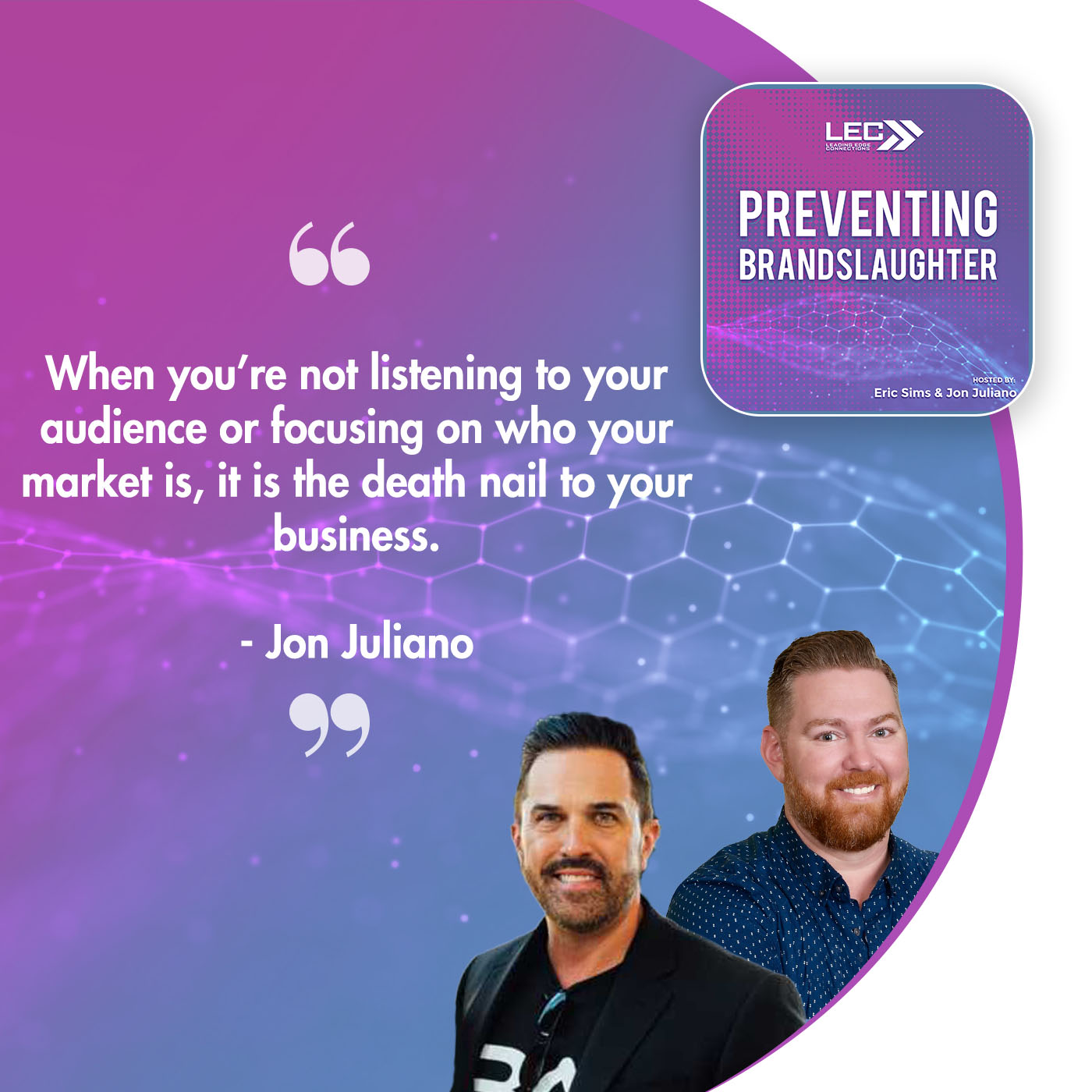
If you see the same thing that we’ve seen, which has been advantageous for us to a certain extent, it’s been challenging. One of the things we noticed with software, information technology, and all that stuff is that they’re typically product and technology-based. They’re not service and sales-based and understanding. They struggle in those areas. Is what you’ve seen too? The challenge is you got a CTO type of guy that’s running everything. They’re all honed in on the product, but their ability to either sell or service after they sell is crippling to them?
We got our start doing proposals and grew more like a consulting company. We learned a lot of lessons along the way. Where we spend most of our time in proposals and building out one-pagers or marketing materials that we’re going to take to targets and the government is taking the technical jargon and putting it into what is the maybe value proposition but like, “What is the impact to this customer we’re going to talk to or the war-fighter that’s going to be reading this?”
You got to understand their pain point and then present yourself as, “We’re this solution. 1) We understand your problem. We can talk to it. 2) We think we can solve this problem.” That opens the door for the conversation, and then you might get to the point where, “We can dive in deep to the technology.” There are only a couple of places, like in the research labs, within the Air Force, and maybe in places like that where you’re going to get into the technical details.
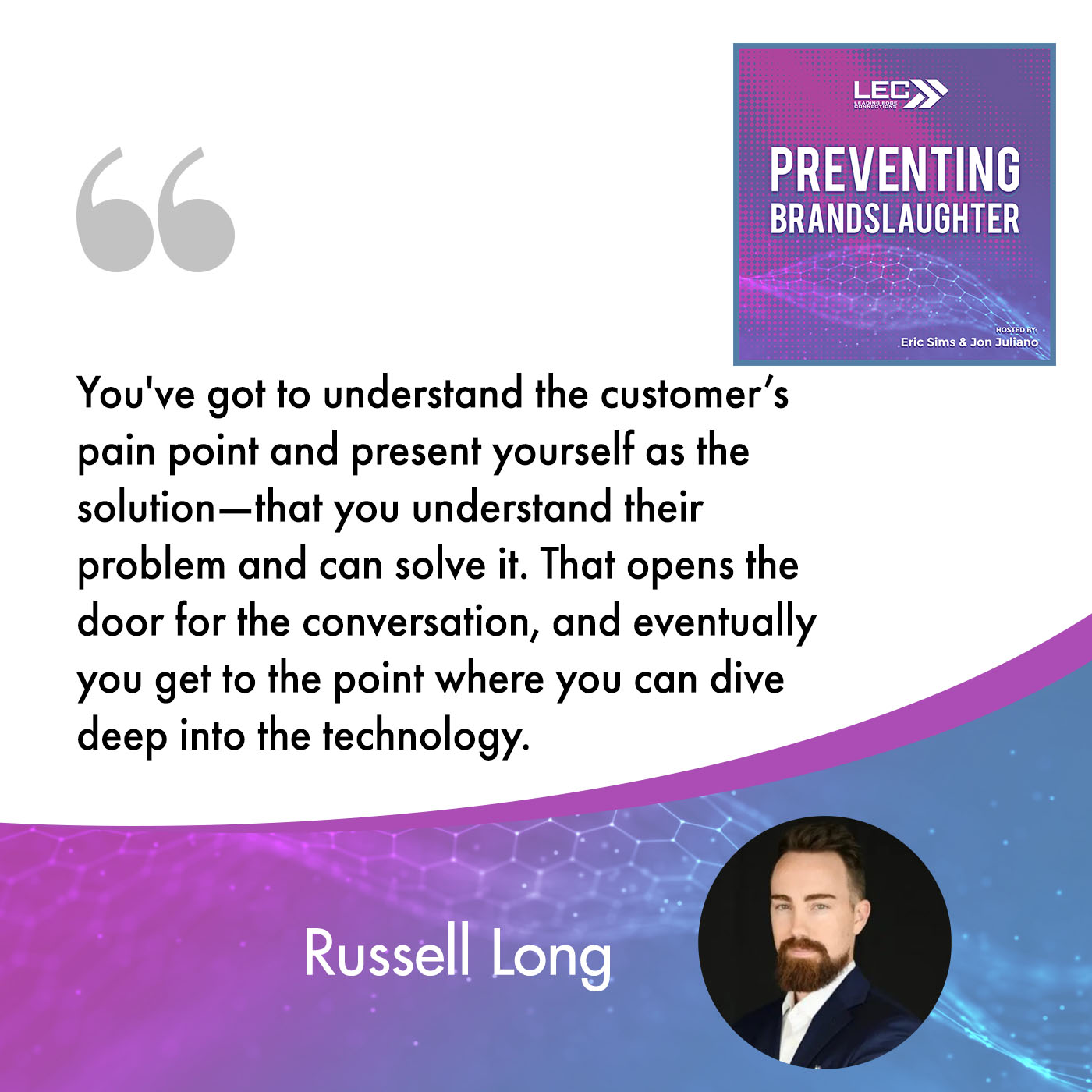
Most founders or a lot of these people were working with us to get excited about the technology. They should, but they understand that no one cares that your algorithm is different because the one piece here is like, “What can it do for me?” That’s where we spend a lot of time, especially on the proposal side, communicating that better.
Your version is probably even more exaggerated than what we do because you’re dealing with the government. It’s complex because of language and things. They’re all speaking English more than likely, but it’s not the same English. With us, it was very similar. They would come in and don’t understand the pain point and the target audience. We’re going to come in and we’re going to talk, “Here’s our great widget. This is why it’s a great widget. This is the technology about how we created the widget,” or whatever it is. To your point, everybody looks at it and goes, “I don’t give a shit,” because they don’t understand what it does for them. They think you’re blabbing about nonsense.
Maybe the equivalent on your end is maybe you’d see it on their website or their marketing materials. They’re talking about like the nuance of technical deep detail.
It was one of our very first clients. They were going after DOD stuff. I wish I’d known you back then. I would’ve sent these guys to you. They are good guys. I would do business with these guys over and over again. I felt bad that we couldn’t succeed. It came down to that piece of like we could never get over that hump because once you got past, “Here’s what it does,” they could never tell us who it was for or what it would do for them. We’re like, “We can’t create that for you.”
It’s gotten to the point in my sales conversations where I will tell them, especially going after some of this earlier stage stuff, “You’ll be offended and upset with me at how little technical information I’m putting into this proposal. Be ready. You guys are going to want to put in way more detail. I’m going to tell you, ‘Sorry, it doesn’t matter,’ which is not what you want to hear. Eventually, we can get into some of those details later on, especially as we get to more scale and more technical customers. Especially up front, some of these front doors and on-ramps I’m talking about that we use, absolutely not. You’re going to lose them. They’re going to go to sleep. You’re not going to get great.”
It’s not going to check their box. They got some boxes they need to check. Jon’s good at this in our industry. He does a lot of our RFPs. They’re different by industry, but he’ll be reading me what he’s putting down, and I’m like, “This is garbage. Nobody’s going to buy this.” He’s like, “Trust me, it’s a box they need to check.” I’m like, “Wouldn’t they want to hear this?” I’m all salesy about it. He’s like, “Nobody wants to hear that right now. We’re going to get to that point later on.” I get it.
That’s an immense value because, to your point, and I’m sure this is where you saw the gap, this is what causes an enormous amount of companies to go belly up. They fail because of this. The turn and they’re done. It’s either work with somebody like you, “I lucked out and got it,” or fail. We all know that you’re not going to get lucky very often. It’s not a good game plan to play with the casino plan to try to get your business up. I know it’s mostly tech. Is that most software when we’re talking technology or is it a mix of hardware and software?
It’s about 50/50. Even the hardware is software enabled. It’s hard to draw the line, but a lot of software.
You touched on one side of it. You’re going to go back to the other side. I’m not going to let you off the hook with that. Let’s get back to what you were talking about.
The GovCon industry is like an acronym or throwing this thing terms around Government Contracting. What drives me crazy about this industry is that many of these people fear-mongering like, “You got to do these facility clearances, secret clearance, and all these things or you’re going to go to jail. You got to do these cybersecurity compliance things or you’re going to go to jail or get fined.” I see them do it many times when it’s like, “It’s not required yet. There are a couple of years out.” There’s this whole perception that we raise barriers and talk up those problems because then they’re going to need me. It scares away. It’s already hard enough, especially in my world, to get new blood and government contracts, new ideas, and new cool technologies.
It's already hard enough to get new blood into government contracts. The last thing we need to be doing is like scaring them all away. Share on XThe last thing we need to be doing is scaring them all away. That’s the mentality. To me, a lot of it’s like bottom-feeding. They’re there and thriving off of the barriers. What gives them an excuse to exist is like, “We know the regs better than anybody else so you got to work with us to stay out of trouble.” It’s such a poor mentality, especially since I feel like we all woke up with the Russian invasion and like, “We got some real threats to pay attention to with Russia and China.” The last thing we need is for the best technology companies to walk away from working with the Department of Defense because it’s too hard to figure out how to work with all.
I always found that interesting and this is perception, I have no way of quantifying. It’s a thought, but I always had the inclination that it was harder for a US company to work with the US government as opposed to an international company to work with the US government.
In the small business world especially, there are a lot of programs trying to pull in US owned and operated. I’ll gladly say that is not the case in most of my world that I’ve seen in the active duty Air Force on both sides of the fence.
I want to make sure I understand you correctly. Some of these barriers they put in place to say, “You have to have this and that. If you don’t, you could get fined.” You’re saying somebody is feeding off those things. Is it the GovCon or is it another subcontractor that’s supporting that says, “Our job within the DOD subcontracting is we evaluate all these people. “ We have prep like this in a call center world. It drives me crazy. I’m like, “This is the dumbest shit I’ve ever seen.” You create a certification so that someone else can charge you to certify that you have their certified garbage so that you can go give a piece of paper to somebody that is meaningless in a lot of ways.
This is government generated. It’s called Federal Acquisition Regulations with thousands of pages. A lot of it is around how you have to compete “requirements,” purchases, and buys. Once you’re on contract, and it depends on some of the different situations and contract types and all that, like there are cybersecurity requirements. You could get to the point where you need a facility that meets all these standards so that you can have classified information there and store it in all the rules around it. The best example I can give is the government started rolling out new cybersecurity requirements, CMMC or Cybersecurity Maturity Model Certification.
A year before it was even made official, people were trying to charge to audit you to this standard that hadn’t even been set yet. They were pushing to make it happen. Towards the end of that year, then they got pushed out another year. They got moved to CMMC 2.0 and pushed out another year. People weren’t telling you like, “Do this in preparation for.”
It was like, “You’re going to get got. You’re going to get behind. You’re going to lose. You’re going to get fine.” It’s like all this garbage. It didn’t even come to fruition, either. Be honest. It is in your best interest. This is a way to start getting a leg up. It’s an 80% or 90% set solution. Be honest about it and not like fear-mongering. You’re going to get got mentality. That’s what I see.
We still go in and look at some government RFPs for us because there’s stuff with being in the contact center and we do some technology stuff. There are opportunities for us, but because it’s not our world, we’re not real experienced there as far as the RFP process. It is a little bit different. We’ve looked at stuff and done exactly what you said.
We look at the list and we’re like, “Screw that. That’s going to cost us $200,000 or $500,000 just to even get qualified to check the box, to fill out the thing to maybe get on the list too and then we’re out all that money.” What you’re saying is the first thing you can do is help filter through what you need to invest and do to get those boxes checked. You can reverse engineer, “What all do we have to do? What’s it going to cost us? What’s the estimated timeline?”
Our whole approach is very different. There are not many that have taken on this mentality. Having been a contracting officer and worked from that side of the normal competitive process, the RFP process is awful. It’s a grind. It’s almost never the best company or technology that wins. It’s the people that understand the system. Our approach is to go after non-competitive, different authorities and contract vehicles. Working with technology companies helps us get into that world without getting too technical on the different authorities, the far and all that Federal acquisition regulations are, and all that crap.
The RFP process is awful. It's a grind. It's almost never the best company or technology that wins; it's the people that understand the system. Share on XOur whole approach is to get the government almost back to a free market where they could have an open conversation because they’re terrified to do that. Have an open conversation because you’ve got the authority to work directly with them. See who has the best tech and demo, and understands your problem as the right solution for you, then work with them. It’s a crazy concept. The government and historically, this old mindset and all these regulations push everything away from that. Our unique approach is trying to get into these non-competitive realms and then push the “requirement” of the contract stuff through so we can get an award.
That seems like a better entry point as opposed to going through the competitive RFP process.
What you guys are talking about is responding to an RFP. I don’t recommend it. I don’t recommend commercial companies go and start responding to these RFPs. The margins suck. Evaluation criteria usually suck. There has been some push away from the lowest price technically acceptable, but we still see it a lot. Awful.
The RFPs that always make me chuckle are the ones that are specific. They already have the company picked out where it’s like, “You have to have a location on Main Street in this ZIP code. On the left side of the street, headed North. The first name of the owner rhymes with Barry.” That’s been our challenge with that. To put a bow on things, when you’re talking to our readers, who are some people that you would say like, “If you’re this type of business and you’re in this place, reach out to me. Give a call and an email because it’d be a good conversation at least it’d be worth your time worth and mine to find out more?”
At least $5 million in revenue seems to be a pretty good mark. Anywhere north of that is great. We’ve worked with some companies that got $20 million, $30 million, or $50 million a year in revenue and they’re like, “Maybe we should start a new revenue stream.” At least, a series A, which again varies widely. Sometimes it’s $2 million, $50 million, or something outrageous. I’m talking about like space industry. At least series A, maybe getting closer to series B. There are some cool matching programs where that’ll match investment dollars. You don’t have to have that investment. It’s either or both. It would be a good starting point.
In the technology lane, in some capacity, would it be another one or not?
Yes, technology because the authorities do this non-competitive stuff. We can’t do it in construction and services. It’s the normal proposal grind that we’re talking about.
That’s what we’re stuck in.
At least we can explain to people and tell them we have even before we build it that makes enough sense until we get a $100 hundred.
Managing proprietary, which is involved in the business. That’s a technology component that we can now spin as a tech company and it’s a part of the leading edge.
When you look at the future, what are you guys going to be? We’re talking about who you’re servicing now. You’re growing a business and you have a goal of what you’d like to accomplish over the next years. Can you touch on a little bit about where you’re going and, with that, some of the things that you’ve learned and maybe committing brandslaughter in your own brand that you’re going to not do?
Let’s tie it together. The biggest mistake I did setting out was I knew I wanted to start a business. I always thought this would be a cool little side hustle, a little project, maybe get $2 million in revenue and a handful of employees. I’d learn where I wanted to learn. I’d move on. I made a lot of mistakes early on in the business, chasing after a lot of other ideas. To get a little personal, part of it is like consultants. They have like a negative connotation like, “How do they work?” What do they add value to?” I thought for a long time, “I need to develop a tech, a widget, or whatever.”
What I realized is we’re helping a ton of people. This problem is much bigger than I ever imagined. The traction we’ve been fortunate to have has been much more than I ever imagined. Over the last couple of years, we are coming to terms with that, and being like, “This is an opportunity to add a tremendous amount of value and help technologies in all kinds of different industries grow.” That helps them then have an impact. I won’t be the one building the widget. I can support all these companies and bring a tremendous amount of value to doing that. I’m taking ownership of that.
To answer your question about looking forward, we started as a proposal company. We’re trying to be very purposeful in who we target that gets pulled into these proposals. Doing that is a big piece of what we do, but a lot more of it’s the consulting strategy. There’s a tremendous amount of growth there where I talked about some of the companies we’re working with now being certain tech companies, certain stages. That can continue to expand, and move into bigger and bigger companies.
As we’ve matured, we’ve moved away a little bit from some of these earlier-stage companies. They’re still near and dear to my heart. I’ve been there. I didn’t have the money to pay for experts and stuff, still could be some ways to go back and support the earlier stage guy that can’t afford a team of We bring bds capture and proposal to the team.
The first thing and the biggest picture is more of this consulting strategy that helps execute your government contracting strategy to drive revenues, get into these more interesting flexible, non-competitive contract vehicles and scale that up. There’s a ton of room for growth there. There’s a big picture down the road.
We can get to $100 million dollars a year and beyond and try and grow something to that scale. As we are building processes now versus a couple of years ago, having that mindset of like, “Is this going to work with 50 employees? This is going to work with a 100? Do we make that trade-off of like, ‘A little bit cheaper now to get us to 50,’ knowing we’re going to have to rework it?” Maybe this is way more than you wanted. There are some serious scales here.
These are the challenges that a lot of companies face because success is great, but it also opens the door to like a lot of challenges. When you look at the size of your business now and the profitability of it, and then you double or triple that in size, how do you do that and keep it at a place? There’s a payment you make to that. It’s a bigger company. It’s a bigger “headache.” It’s more time and energy. Are the margins going to stay the same? Is the payoff going to stay the same? Am I going to be as happy running a large company? That’s a question a lot of guys fail to ask.
We all get in. We’re like, “We’re the biggest company I could make,” because we’re all guys. We want to conquer the world. A lot of women do that too. I don’t mean to be sexist in saying that. I’m a guy so I can only speak for that. When you look at that, there’s a trade-off or a payoff that happens at some point in time that says, “Maybe my business is better off being if at 25 employees at a marginal contribution that I make a good living. I’ve got still an enormous amount of freedom over here to live the life that I want because these other things are important to me.” For somebody else, it may be like, “I love this, but I’m not going to be happy or content until I’ve got this thing as big as I can push it.” That’s my sweet spot.
That’s where it was early on. It’s like, “We’re growing and let me throw everything I can into it.” We are about half the revenue of what we were at our peak because what we were doing was not scalable and it was miserable. It was awful. 70 to 80 hours a week. You had a lot to learn on the hiring front and the culture front, like all these different pieces. It was very painful. We took a step back and spent most of the last few years restructuring, figuring out who we are, writing our values down, talking about our culture, and pulling that into the hiring process. It’s all these different pieces.
I don’t want to get to a 50-person company if I’m working 80 hours a week. “Three times the money I am now,” but like, “I’m miserable. My health sucks. I don’t see it in my family.” That defeats the purpose. You’re totally right about having an eye towards it. If I’m going to get to 50, 100, to 300 employees, it’s got to be where like, “If I’m working more than 60 hours a week, I’ve done it wrong. I’m going to have to get out of it.” If I can have that right, I got to have that right balance. Everyone talks about balance. Empower the right people to run the things, make the decisions, make sure it’s purposeful, and build them up to be empowered to do that someday. That’s key.
Empower the right people to run things and make the decisions. Make sure you are building them up to be empowered to do that someday. Share on XThis gets missed quite a bit when it comes to brandslaughter, especially for growing companies, because there are a lot of things that happen. One is I get to be a CEO of a large corporation. I’m married to the way that got us here, and then I become stuck without knowing it. I’m the causation of the brandslaughter because this is the way we’ve always done it. This is the way we do it, and that’s our death rattle.
Jon and I went through this where we grew fast and it was great. It was like, “High five.” What we realized was we compromised some of our identity, who we believed we were, and how we wanted the business because we’ve been pushed in a direction. You’re moving fast and it’s not intentional. We thought that was the best thing to do. We looked up and we were doing all this work. We’re not making the money that we would’ve been making if we had haven’t pivoted in these three areas that don’t feel even aligned with who we are as an organization.
We’ve had to peel that back and say, “We’re going to have to make some changes and revert back,” which is painful because you’ve got to peel back. People are used to doing things a certain way and then certain people don’t fit in anymore. There are all these things that happen, but now that we’re getting back into that sweet spot, it’s far more enjoyable for us to do what we’re doing.
That’s a huge add to the conversation that you shared that for the average CEO or business owner to say, “You need to take a look at this because if you’re not in your lane and where you feel like you as a person, individual, or company needs to be, you’re going to commit brandslaughter in some way or form because you’re not being true to who you are.
On that note, we both said the same thing and what comes to mind. Have you read Ray Dalio’s Principles?
It’s a great book.
He’s got the squiggly. I like it because it doesn’t go up and you don’t plateau. You go down and say what you described or unpack and peel that stuff away. We’re going down. We got to fix a lot of things, try and make those changes, and then we’re going to go up again. We’re going to hit that next point and maybe it’s a certain mass. You get so many employees and processes have to change and systems have changed. There’s going to be that downtick again where it’s like, “I’m going to learn from here and keep going.” That’s what it makes me think of.
If our readers want to get in touch with you, we talked about who would be an ideal candidate for you already, but let’s make sure we get some info on here as far as how to get in touch with you and how you’d like them to reach out. What’s the best way for them to reach you?
Our website is LongCapture.com. I’m very active on LinkedIn. Those are probably the two best entry points. Connect with us there. On the website, You can submit your email and things like that. We’re constantly pumping out content to try and bring down barriers to what we talked about in the GovCon industry. It should get a lot of information you can help assess, “Is this right?” This is the right starting point for me too.
Reach out to Russell if it sounds like you’re a good fit or even close to a good fit for him. Russell, we appreciate having you on the show. It’s been great talking to you about something that’s a little different for Jon and me as far as industry-wise. It’s always interesting to hear how you guys are tackling some of that stuff. If you want to reach out to Russell, it’s Long Capture and Russell Long. We appreciate having you on the show. If you like the show, please, subscribe, like, share, and send it to people. We want to continue to spread the word about preventing brandslaughter. We thank you for reading another episode. Tune in for the next show.
Important Links
- Long Capture
- Principles
- LinkedIn – Russel Long
About Russ Long

Russell Long founded Long Capture in 2017 to assist commercial companies in making the transition to pursue federal funding by leveraging opportunities provided by the DoD. He holds a Bachelor of Science in Business Administration and management from United States Airforce Academy, and a Masters in Entrepreneurship and Entrepreneurial Studies from Oklahoma State University.
Prior to founding Long Capture, Russell worked hands-on in the field for over 5 years active duty as a Contracting officer for the US Air Force. This experience allowed him to get a better context of the end-user aspect of transactions so that he could bring with him a better understanding of the needs in the DoD. This expertise is now well-served in the way that he assists clients in addressing identified needs in a proposed form that will be best received by decision makers.
At Long Capture, Russell leads a unique team of SBIR and Phase III experts who stand out as leaders in the space and continue to contribute to the success of multiple companies in achieving sole-source authority to pursue greater federal funding. Since founding Long Capture Russell has helped over 365 tech startups win more than $222M in contract awards, including over $40M on a sole-source basis, enabling these companies to deliver their leading-edge technology to the warfighter.


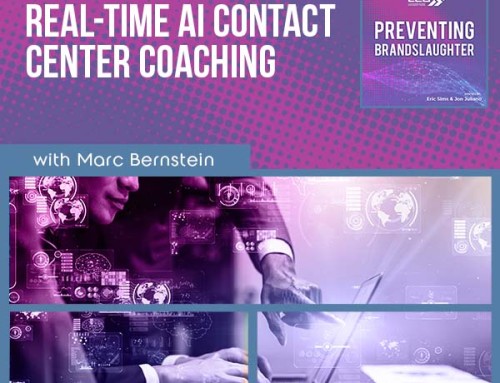

Leave A Comment